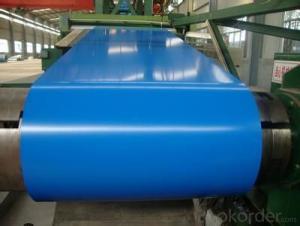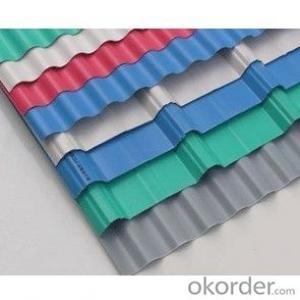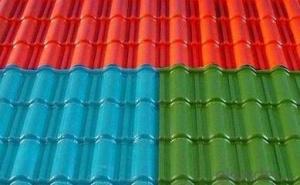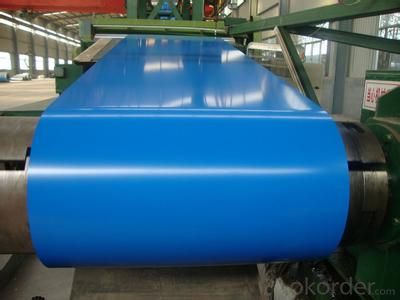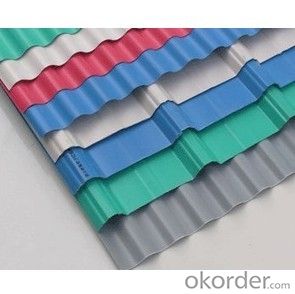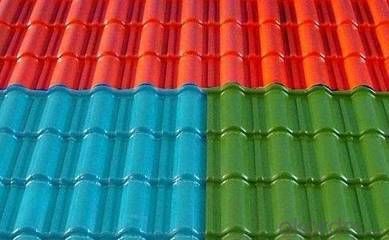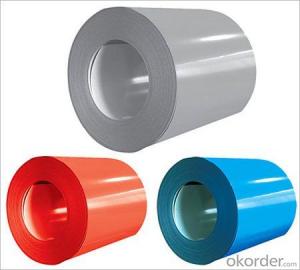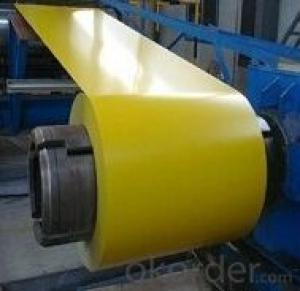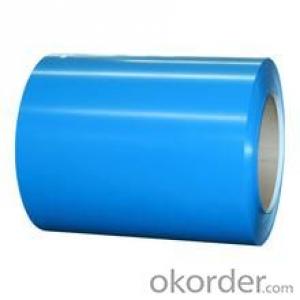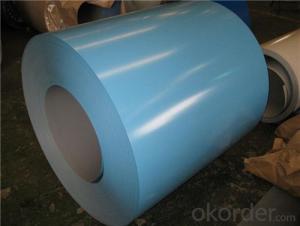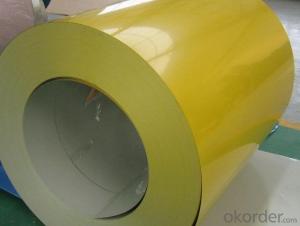Pre Painted Steel Coil in Every Color for Your Tiles
- Loading Port:
- Tianjin
- Payment Terms:
- TT OR LC
- Min Order Qty:
- 100 m.t.
- Supply Capability:
- 3000 m.t./month
OKorder Service Pledge
OKorder Financial Service
You Might Also Like
Specification
1. Pre-Painted Galvanized/Aluzinc Steel Coil with Best Quality in China
In a row on the crew with cold-rolled strip steel, galvanized steel strip (electric galvanized and hot dipped galvanized) as substrate, after surface pretreatment (skim and chemical treatment), with the method of the roller coating, coated with a layer or multilayer liquid coating, after baking and cooling of the proceeds of the plate is the coating on the steel plate.Due to coating can have a variety of different colors, customarily called color coating steel plate coating steel plate.Again because of the coating was conducted before the steel plate forming process, it's called pre coated steel sheet abroad.
2.Main Features of the Pre-Painted Galvanized/Aluzinc Steel Coil:
Roof, roof construction industry components, panels, balcony window, newsstands, warehouse, rolling door, heaters, drainage, etc
Household electrical appliances switch cabinets, refrigerator, washing machine, air conditioner, microwave oven, bread machine, copier, vending machines, electric fans, vacuum cleaners, etc
Furniture industry lampshade, wardrobe, bookshelf, desk, counter, signs, medical equipment, etc
Transportation industry automobile ceiling, car shell, carriage board, tractor, trams, container, highway fence, ships bulkhead, etc
Other aspects of instrument shell, dustbin, billboards, clocks, photographic equipment, meter, etc
3.Pre-Painted Galvanized/Aluzinc Steel Coil Images
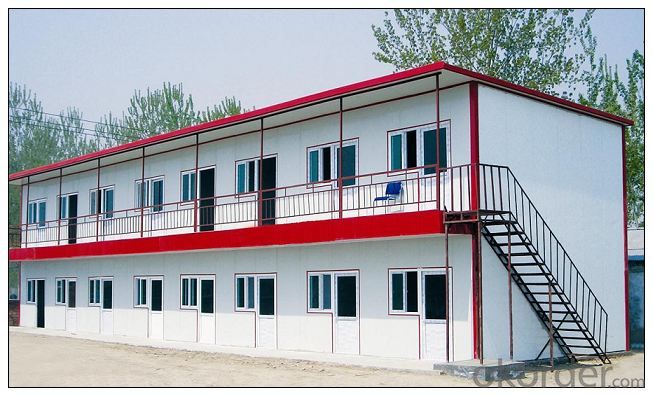
4.Pre-Painted Galvanized/Aluzinc Steel Coil Specification
Standard: AISI, ASTM, BS, DIN, GB, JIS
Grade: DX51D, DX52D
Thickness: 0.17-2.0mm
Brand Name: KMRLON
Model Number: coil
Type: Steel Coil
Technique: Cold Rolled
Surface Treatment: Coated
Application: Boiler Plate
Special Use: High-strength Steel Plate
Width: 20-1250mm
Length: customized
commoidty: pre-painted galvanized steel coil
Thickness: 0.13-4.0mm
width: 20-1250mm
zinc coating: 40-180g/m2
printing thickness: top side: 20+/-5 microns, back side: 5-7 microns
color: all RAL color
surface treatment: color coated
coil weight: 4-7 tons
coil ID: 508/610mm
packaging: standard seaworthy packing
5.FAQ of Pre-Painted Galvanized/Aluzinc Steel Coil
1. What’s the application of this product?
Roof, roof structure, surface sheet of balcony, frame of window, etc.
2. What’s the brand of the paint?
We use the best brand of all of the word—AKZO.
3. How to guarantee the quality of the products?
We have established the international advanced quality management system,every link from raw material to final product we have strict quality test;We resolutely put an end to unqualified products flowing into the market. At the same time, we will provide necessary follow-up service assurance.
4. How long can we receive the product after purchase?
Usually within thirty working days after receiving buyer’s advance payment or LC. We will arrange the factory manufacturing as soon as possible. The cargo readiness usually takes 15-25 days, but the shipment will depend on the vessel situation.
- Q: How are steel coils used in the production of steel fasteners?
- Steel coils are used in the production of steel fasteners by being uncoiled and then shaped into various forms such as screws, nuts, bolts, and washers. The coils provide a continuous and efficient supply of high-quality steel material, ensuring consistent and reliable production of fasteners.
- Q: which one(glass or steel)has more power and velocity? im planning on using my slingshot for hunting.
- glass what
- Q: What is the role of steel coils in HVAC systems?
- Steel coils play a crucial role in HVAC (heating, ventilation, and air conditioning) systems as they are responsible for facilitating the transfer of heat between the air and the refrigerant. In HVAC systems, steel coils are typically used in two main components: the condenser coil and the evaporator coil. The condenser coil is located in the outdoor unit of an HVAC system and its primary function is to release the heat from the refrigerant into the surrounding air. This coil is made up of multiple steel tubes that are bent into a serpentine shape and are attached to aluminum fins. As the hot refrigerant flows through these tubes, the steel coils ensure maximum surface area contact with the surrounding air, allowing for efficient heat transfer. Through this process, the heat is dissipated into the outdoor environment, resulting in the cooling of the refrigerant. On the other hand, the evaporator coil is situated in the indoor unit of the HVAC system and its role is to absorb heat from the air inside the building. Similar to the condenser coil, the evaporator coil consists of steel tubes that are connected to aluminum fins. The refrigerant, in a cold state, flows through these tubes, and as warm air from the building passes over the coils, the heat is transferred from the air to the refrigerant. This heat absorption process cools down the air, which is then circulated back into the building, providing the desired cooling effect. Overall, steel coils in HVAC systems are essential for heat transfer between the air and the refrigerant. Their design and placement allow for efficient cooling or heating of the air, depending on the system's mode of operation. Without steel coils, HVAC systems would not be able to effectively regulate the temperature and provide the desired comfort levels in residential, commercial, and industrial buildings.
- Q: What is the weight range of steel coils?
- The weight range of steel coils can vary greatly depending on the specific type and dimensions of the coil. However, typically, steel coils can weigh anywhere from a few hundred kilograms to several tonnes.
- Q: How are steel coils used in the production of steel bolts?
- Steel coils are used in the production of steel bolts as they serve as the primary raw material. The coils are unwound and fed into a machine that cuts and shapes the steel into bolts of the desired size and shape. The coils provide a continuous supply of high-quality steel, ensuring the consistency and strength of the bolts produced.
- Q: Does the solution change, or does only the steel wool change color?
- once you upload water to anhydrous copper(II) sulphate it turns blue because of the fact that's going to become hydrous copper(II) sulphate. Then, in case you upload water greater, that's going to proceed to be blue, could be slightly darker.
- Q: Can steel coils be coated with polymer?
- Yes, steel coils can be coated with polymer.
- Q: My uncle got me some new 'Nam style jungle boots at the px at Fort Worth JSB, and he told me that back in Vietnam, they used to issue guys steel sole boots, that had a sole reinforced with a steel plate, as punji stick d-fence. Is this true, it sounds logical, but I can't figure out how a steel plate in the sole would work. My uncle is kind of a BS'er, plus he wasn't even in Vietnam, much less the Infantry, much less combat, but he was in USAF at the time.
- Steel Sole Boots
- Q: What are the different coil cutting machine options available for steel coils?
- Steel coils can be cut using various machines, each designed to meet different needs and specifications. The available options are as follows: 1. Slitting Machine: This machine slices large steel coils into narrower strips or slits. It incorporates a circular blade that moves across the coil's width, cutting it into desired widths. Industries like automotive, construction, and manufacturing commonly use slitting machines due to their ability to handle a wide range of steel coil thicknesses. 2. Cut-to-Length Machine: This machine is used to cut steel coils into specific lengths. Equipped with a shearing mechanism, it cuts the coil based on programmed length requirements. Cut-to-length machines are particularly beneficial when precise and consistent lengths are necessary, for instance, in the production of steel sheets or plates. 3. Rotary Shear Machine: Designed to cut steel coils into smaller pieces or squares, this machine employs a rotating drum with multiple cutting blades. It shears the coil in a continuous process, making it suitable for industries that require smaller steel pieces for further processing or assembly. 4. Guillotine Shear Machine: Equipped with a vertically moving large blade, this machine is used for high-speed and high-precision cutting of steel coils. It is commonly employed in heavy-duty industries like shipbuilding and metal fabrication, as it can handle thicker steel coils. 5. Laser Cutting Machine: Laser cutting machines provide a highly precise and versatile method for cutting steel coils. By using a focused laser beam to melt or vaporize the material, they ensure clean and accurate cuts. Laser cutting machines are suitable for a wide range of steel coil thicknesses and can handle complex shapes and patterns. These examples illustrate the available options for cutting steel coils. The choice of machine depends on factors such as coil thickness, required cutting precision, desired output volume, and specific application requirements.
- Q: What are the different methods of roll forming steel coils?
- There are several different methods of roll forming steel coils, each with its own unique characteristics and applications. Some of the most common methods include: 1. Traditional Roll Forming: This is the most widely used method and involves passing a continuous strip of steel through a series of rollers to gradually shape it into the desired profile. This method provides high precision and repeatability, making it suitable for producing complex shapes and profiles. 2. Pre-Punch and Cut: In this method, the steel strip is pre-punched with holes or slots before it is roll formed. This allows for easier cutting and shaping of the material during the forming process. Pre-punching and cutting can improve efficiency and reduce waste in certain applications. 3. Post-Punch and Cut: This method is similar to pre-punching and cutting, but the holes or slots are added after the roll forming process. This allows for more flexibility in creating custom shapes and designs, as the holes can be placed precisely where needed. 4. Post-Forming: In some cases, the steel strip may be first roll formed into a basic shape or profile and then further manipulated or formed after the initial roll forming process. This method allows for additional customization and can be used to create more complex geometries. 5. Progressive Roll Forming: This method involves passing the steel strip through a series of rollers in a continuous process, with each roller gradually adding a specific feature or forming a particular part of the final profile. Progressive roll forming is commonly used for long, continuous profiles with repetitive shapes. 6. Incremental Roll Forming: In this method, the steel strip is incrementally formed by a series of small movements of the rollers. This allows for greater flexibility in shaping complex profiles and can be particularly useful for producing prototypes or low-volume production runs. Overall, the choice of roll forming method depends on the specific requirements of the application, such as the desired shape, complexity, precision, and production volume. Each method offers its own advantages and limitations, and manufacturers often select the most appropriate method based on these factors.
Send your message to us
Pre Painted Steel Coil in Every Color for Your Tiles
- Loading Port:
- Tianjin
- Payment Terms:
- TT OR LC
- Min Order Qty:
- 100 m.t.
- Supply Capability:
- 3000 m.t./month
OKorder Service Pledge
OKorder Financial Service
Similar products
Hot products
Hot Searches
Related keywords
